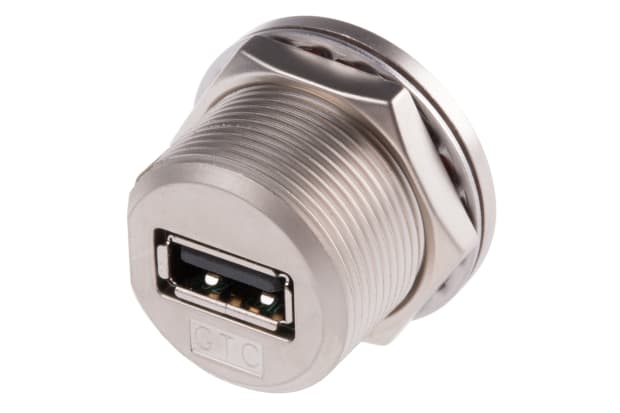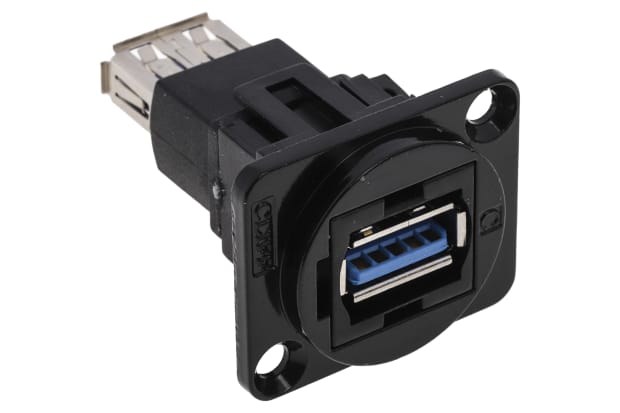- Published 18 Apr 2023
- Last Modified 29 Aug 2023
- 5 min
What are the Different Types of USB Cables?
USB cables have a range of uses in computer networks, but how can you make sure you choose the right type?

From your smartphone to your laptop and all digital devices in between, the USB (Universal Serial Bus) cable has become, well…universal.
What are the Different Types of USB Cables and Connectors?
With the advancement of technology, many Universal Serial Buses, known as USB cables, have been developed to support a huge range of needs and uses.
Examples of different types of USB connectors include:
- USB Type A
- USB Type B
- USB Type C
- USB 3.0
- USB Mini A, B
- USB Micro A, B
Knowing the difference between USB cables is key to selecting the best one for your needs.
To understand the USB naming convention - the number indicates the speed and power the cable has, whereas the letter is referring to the type of connector as well as what port type it will fit into.

What is USB Type A?
USB type A or ‘Standard A’ cables are one of the most common connection cables and the connectors on these cable types are large and rectangular. Their ports can be found on a variety of products, such as computers, power banks and game consoles. USB type A connection cables are male and will connect to a type A port.
USB type A cables have been around for many years, first developed in 1996, and becoming more widely used in 1998 and onwards. Like many types of technology, USB Type A connectors have different editions, including USB 1.0, USB 1.1, USB 2, and USB 3. However, USB type A cables are backwards compatible. If you have a USB 3 cable, it will still work in a USB 2 or 1 port. USB 3 cables have faster speeds and have 9 pins on the inside of the connector, rather than four.
USB 3 Type A adapter cables are also sometimes blue on the inside, though this is not always the case. USB 2 and lower cables are more commonly black on the inside, though this is also not guaranteed. They will also have four pins on the inside of the connector. As mentioned before, a USB 3 cable will still work in a USB 2 port despite the number of pins, however, the speed of a USB 3 adapter will not be fully utilised in a USB 2 port.

What is USB Type C?
A USB type C cable type is more modern than a USB type A. The connector is much smaller than a USB type A cable, and has a similar rectangular shape, though the sides are more rounded than type A connectors.
The type C connection cable is the same on both sides, which means it can be plugged into a port either way round. Its narrow and small shape means that it is ideal for use with phones and smaller electronic devices. Modern computers and game consoles are starting to make use of this adapter cable, replacing the older types.
Type C USB adapter cables are also more powerful than their predecessors and have faster speeds. They can be used for charging and transferring data, images, video, and audio. Even so, the ports they are plugged into can affect the speeds at which they work.
Like type A USB cables, type C cables have different editions of ports that they can plug into, including a USB 3.1 and USB 3.2 port. A type C cable will work in either port, but the 3.2 port will allow the cable to work at much faster speeds.

What is USB 3.0?
A USB 3 cable is a USB adapter with more modern technology and can quickly transfer charge and data. Released in 2008, there are now many variations of this type of USB cable. 3.0 has a speed of up to 5gbps or approximately 5000mbps. This is a huge technological advancement compared to a USB 2 cable, which could only carry approximately 480mbps.
Because of its speed, this USB is sometimes referred to as a ‘super speed USB’. Furthermore, there are now newer additions to this USB cable which can transfer data at faster speeds. A 3.1 and 3.2 USB cable (also known as Gen 1 and Gen 2 cables) can have speeds of approximately 10gbps and 20gbps respectively. USB 3 adapter cables are found amongst most cable types. For most modern applications, USB is the fastest and most reliable connector - you’ll see it across the latest smartphones and laptops.
How to Extend USB Cables?
Due to transfer speeds, different cable types come with recommended length limits. For instance, a USB 2.0 cable has an advisable length of no more than 5 metres. A USB 3.0 cable has a length limit of 3 metres, otherwise, its ‘super speed’ transfer technology may be affected.
There are ways you can extend a USB cable, the first being with an active repeater extension cable. These cables will act like normal extension cables but have technology inside them to boost your cable’s technology. If you have a USB 3 cable and use an active extension cable, the speed of the cable should not be reduced.
You can also use hubs to extend your cable. These are a cable with a box, with multiple ports for you to plug in your cable. They can come with a plug end that is plugged into mains, or with a bus end that plugs into a port. However, if you use a hub with a bus end, you could find that you lose cable speed, due to a loss in power.
With either of these options, the USB cable you are attempting to extend must be at a recommended length before you attempt to extend it. Cable extension will never increase the speed - only retain speed and will not improve the performance.